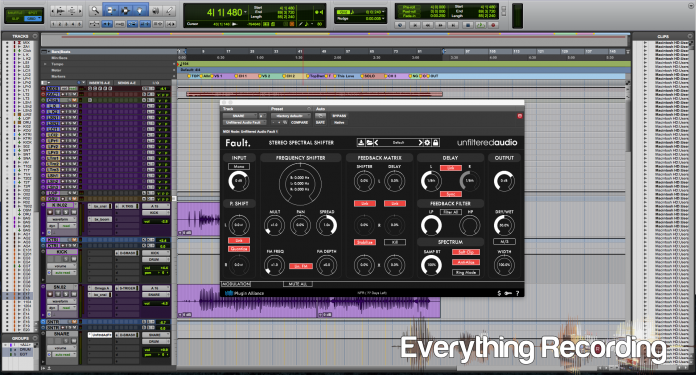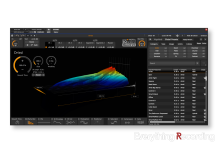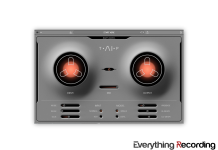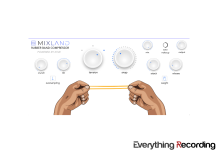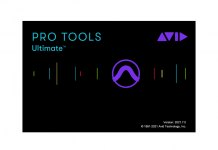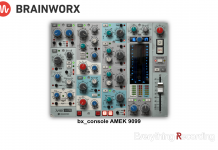Plugin Alliance has thrown us a sonic curveball with their latest venture with (relatively new comer) Unfiltered Audio. Fault is tough to categorize due to all of the different features packed inside its interface. This plugin incorporates, delay, frequency shifting, pitch shifting, LFO filters, modulation, stereo widening, and even a function that drops the sample rate of the entire plugin to create some unheard of effects. On top of all of these features, Fault has a virtual patch bay routing system that can route various outputs to be triggered by “Modulators”. Although the interface is sleek and minimal, this plugin is anything but minimal and at first, it’s pretty overwhelming. Even after using this plugin for quite a while, I still feel I’ve only scratched the surface and depend heavily on the presets menu.
The short story is that Fault is built to enhance and mangle audio in very unorthodox ways. There’s not really a plugin like it on the market. The closest plugin similar would be iZotope’s Stutter, but even Stutter doesn’t do half of what Fault can do. This plugin works great mainly on rhythmic and monophonic material but that doesn’t mean Fault needs to be painted into a corner. This tool is made to transform boring audio into a living moving thing.
The interface is great looking. The crisp black background with white and red-orange accents gives the appearance of a Tesla dashboard, with minimalist control knobs and divided sections. If the black interface is too stark, the settings in the top right corner can invert the colors to an equally cool off white. The settings menu also can change the size of the interface up to 200% (if your resolution will allow). At any size though, Fault’s text and controls are high resolution and never hard to read… learning the controls is a different story. I suspect the people at Unfiltered Audio understand this and have explanations of each control by left clicking each knob via “ToolTips”.
Since this plugin is so complex, the easiest way to tackle this review is to go through the interface, and explain what each function does.
From the top left is the input section, which like the output, only controls the wet signal. A mono button is also available in this section to sum stereo signals down to mono to level both sides to the same playing field. Just below the input is the Pitch Shifter which has an octave range both above and below the target audio. This sections also contains a left and right section that can either be linked or independent of the left or right side with the Link button. Whole semitone notes are enabled with the Quantize button or fine control of pitch with the button off. If more complex sounds are wanted, unchecking these two buttons can allow for precise tuning of pitches for rhythm and even different pitches on the left and right side. This comes in handy with instruments that need to be more prominent in the track by placing an octave above on one side and an octave below on the other. Leads sound really cool with this effect blended in.
The next section of the plugin is the Frequency Shifter. The big knob is a global frequency selection that can go either plus or minus 500Hz and the 5 buttons below work in tandem with the big knob to create stereo shifts and movement. The Mult knob allows for finer tuning of the frequency by multiplying frequencies either above or below by 5 times, giving essentially 5kHz plus or minus to work with. The Pan knob controls how much of each shifted and delayed channel is heard at the output and Spread controls how much is shifted in the right channel. Combining these controls can create both subtle movement as well as jarring metallic effects. In a bonus control, the Frequency Shifter also contains an Oscillator that can inject movement inside of your movement with FM synthesis. This “Inception” style control can be either Linear or Exponential by enabling the Lin FM button in between the frequency and depth controls.
The Feedback Matrix is where things start getting crazy. This window gives additional feedback controls for both the Frequency Shifter and Delay section for each side of the stereo field. These sides can be linked with the Link button or controlled separately for more stereo madness. Cross feedback from left to right can be controlled for both the Frequency Shifter and Delay, allowing for parts of the opposite side to leak into the other. Things can get very squirrely fast so Stabilize and Kill help prevent oscillator and delay runoff.
Delay is one of the easier sections of this plugin. Each side can be linked or separated as well as tweaked for different delay types on each side. Sync will work with your host DAW and gives delay times in notes. If this button is not highlighted, fine-tuned controls can change delay times in milliseconds. Offsetting these ever so slightly can create great widening of tracks. Just below the Delay section is a Feedback Filter which can high or low pass the feedback of the controls to clean up repeats and shifts. If this is needed on the entire wet signal, the Filter All button will apply the filter across the entire output. The Spectrum section gets really geeky and can drop the sampling rate of the entire plugin, giving you the low fi, bit crushing sound. To smooth things out, a Soft Clip limiter will round off audio as it clips and Anti-Alias will apply a very technical filtering method which I don’t have the brains to properly describe. Ring Mode turns Fault into a ring modulator, which can make the plugin into a stereo tremolo or invoke chaos into the entire signal.
On the output section lies the Output volume of the wet signal, a Dry-Wet knob, Mid Side Mode, and a Width control. One of the unique things about the Dry-Wet control is that at 50% (which is the default setting when opening the plugin) phase cancellation is occurring, causing the track to instantly sound different than the source audio. This is due to how the incoming and processed signal interact within the plugin. The Width control can spread the signal from 0% (mono), to 50% (stereo), and 100% (super wide). This can be used with Mid-Side mode as well with 0% being Mid only and 100% being Side only.
If all of this wasn’t confusing enough, for the more advanced user *points to smarter person, Fault features a Modulation System whereby virtual patch cables can link to other controls and alter the characteristics by using LFO’s, Input Followers, Sample and Hold, and Macros. When the Modulation box at the bottom of the window is clicked, a box drops down at the bottom of the window and little circles appear on controls that can be “patched” to modulate. Left clicking on any of these circles and dragging will show a cable that can be dragged to the modulation section. Up to 6 modulators can be added with more slots planned in the future. These modulators can even modulate themselves creating endless loops of controls. As controls are changed via modulation, the changes are represented by red-orange lines in the function that is being altered. This is a great visual to help create rhythmic movement with functions within Fault. I do wish the “Tooltips” was available for this section as this is the toughest part to learn.
Overall, what Fault does, it does incredibly. Complete mastery of this plugin takes quite a bit of hands on time, but turning knobs with reckless abandon yields its own bounty. When starting out, rely on the presets to give inspiration and learn from there. It’s probably very easy to get frustrated with this plugin for a newcomer so exercise patience. This plugin can get out of hand rather quick but using the Wet/Dry knob allows you to embrace the insanity and incorporate it into your original source audio. Once some time is spent with the interface, subtle effects can create incredibly impactful tracks.
Either way, Fault is a blast to work with and brings a whole new thought process and approach to effects. It sounds just as great subtle as it does all out wobbly and metallic. If you are looking for a plugin to set your music apart from the herd, you’ve come to the right place.
For more information, visit https://www.plugin-alliance.com/en/products/unfiltered_audio_fault.html



